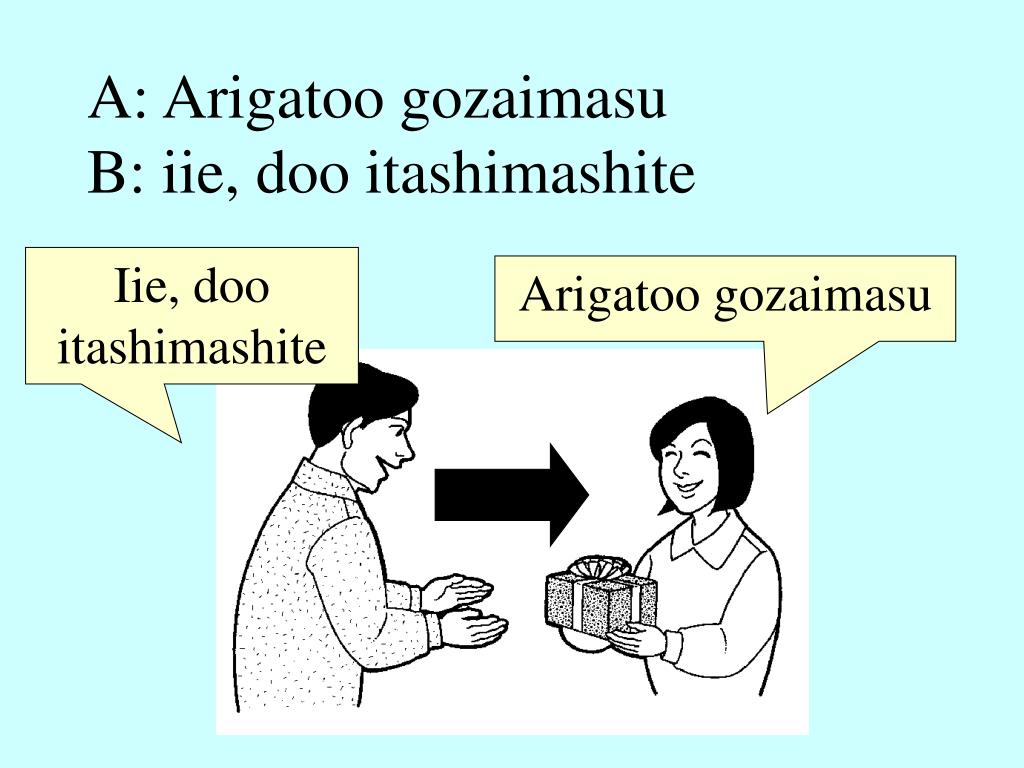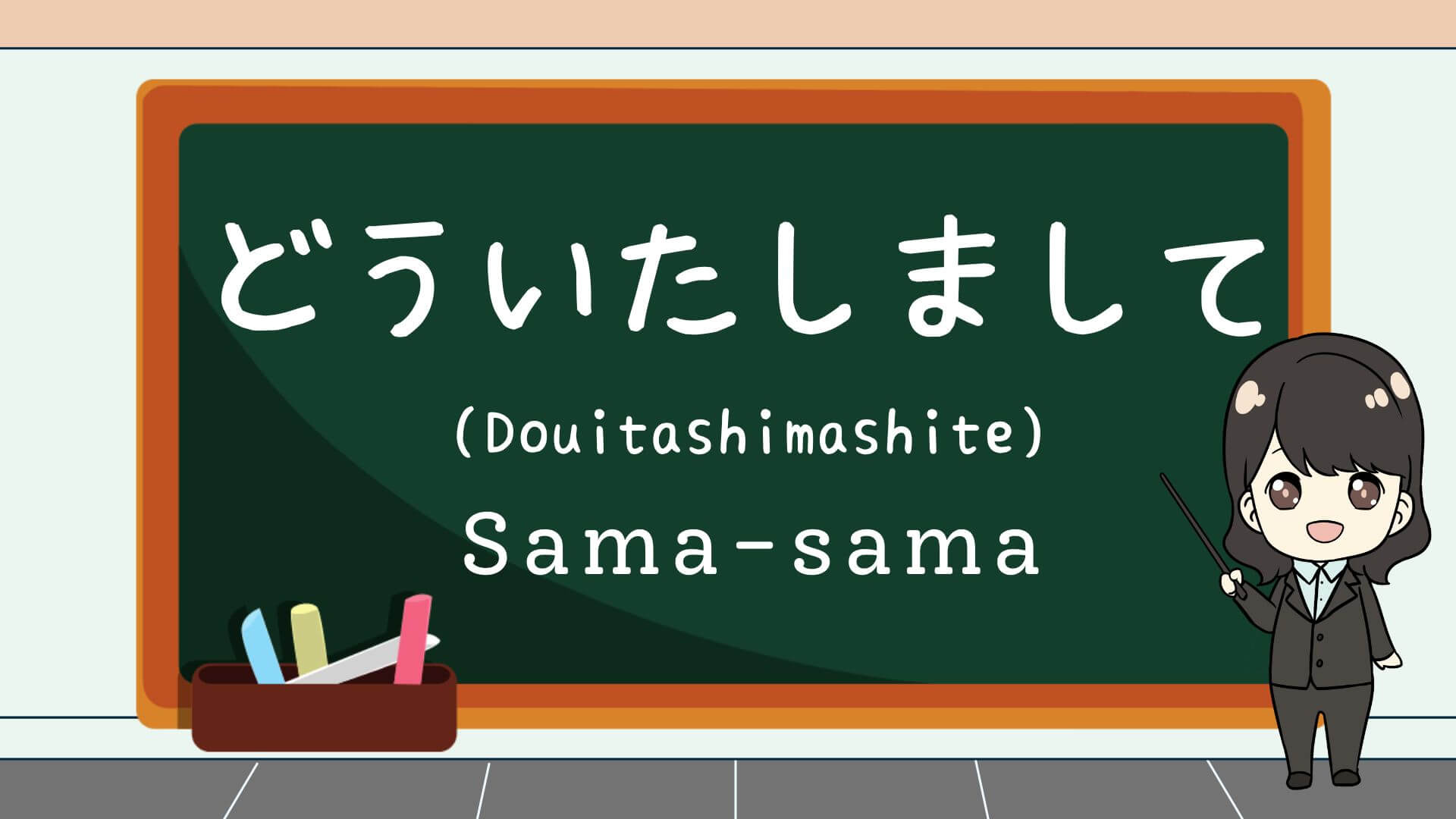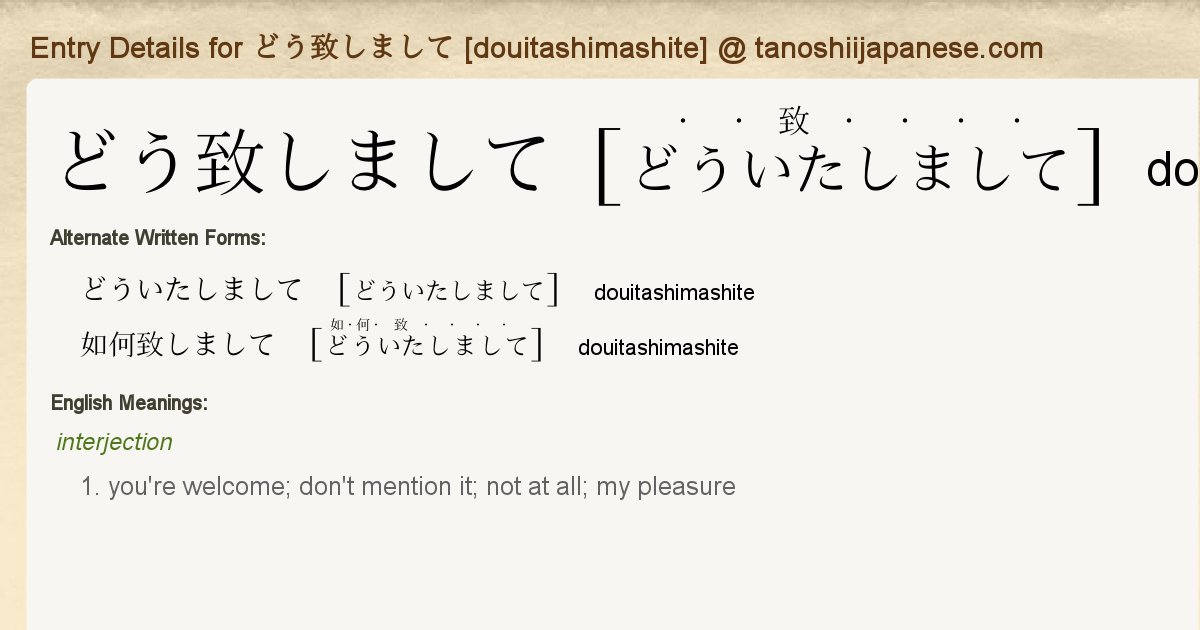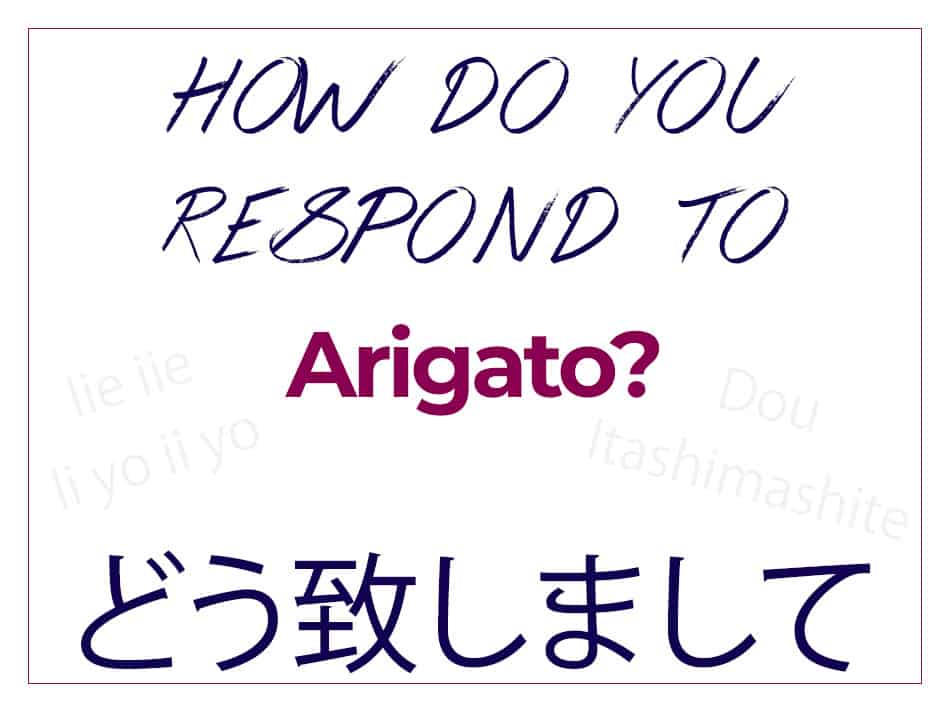
You’re How to Use Douitashimashite in Japanese
どういたしまして dou itashimashite: it's nothing / you're welcome; いいえ iie: you're welcome, used among friends; 結構です kekkou desu: no thank you; By Kanpai. Updated on October 28, 2020 - Posted on May 19, 2015 Comment dire merci en japonais. Interesting article? Community's rating. 4.41 /5 (41 votes.

PPT Greetings PowerPoint Presentation, free download ID5204904
Japanese translation: dou itashimashite. 16:17 Nov 2, 2004. English to Japanese translations [Non-PRO] Other. English term or phrase: you are welcome. a response to thank you. Mike. どう致しまして.

Penjelasan Dou Itashimashite
English Translation. you are welcome. More meanings for どういたしまして!. (Dōitashimashite) Sure! interjection. 勿論です!. don't mention it.

How To Pronounce Dou Itashimashite YouTube
ie, iie (formal), iya (casual) いいえ/いえ/いや no,. +dou itashimashite どういたしまして you're welcome, not at all . Sumimasen expresses apology or gratitude when you are about to trouble or have troubled someone. Sumimasen deshita expresses apology or gratitude when you have troubled someone.

Japanese pronunciation Your "Dou itashi mashite" YouTube
Romaji: Iie. The corollary of yes, いいえ means "no" in Japanese. Strangely enough, you will not hear it spoken out loud so often in Japan.. Romaji: Dou itashimashite. Closely following "thank you" is the phrase "you are welcome". In Japanese, that will be "dou itashimashite"..

Douitashimashite (Samasama) Belajar Bahasa Jepang Kepo Jepang
3. いいえ、どう致しまして (Iie, Dou itashimashite) Adding "いいえ" (Iie), meaning "no" in English, before "どう致しまして" (Dou itashimashite) adds a touch of humility to your response. By using this phrase, you are saying, "No, no, it was nothing," emphasizing your desire to downplay the favor granted.

Douitashimashite (You're Single by MaxwellThomas Spotify
You're Welcome: How to Use Douitashimashite in Japanese. The phrase douitashimashite combines two Japanese words, the pronoun "dou" and the verb "itasu.". Dou (how) is most often written in hiragana. Itasu (a polite verb for "to do") is conjugated to the polite -masu form with the -te form added to the end. The phrase as a whole is usually written in hiragana, but sometimes.

How to Say You're in Japanese Don’t Default to Douitashimashite! WeXpats Guide
In modern Japanese, dou itashimashite is simply a way to acknowledge someone's thanks and to show that you are grateful for their kind words. However, it's worth noting that the term is not used too commonly, as it's overly formal and textbook-like. In fact, this is probably how you first learn the term!. いいえ (Iie)

"Dou itashimashite" Tongue twister!? You're in Japanese!! YouTube
The Most Common Way to Say "You're Welcome!" in Japanese. More often than not, when we look up a Japanese Dictionary, this may be the first word that pops up: どう致しまして (Dou itashimashite). The meaning of the word would be somewhere along the lines of "Y ou are Welcome!" in Japanese. However, the phrase is not so.

dou itashimashite
2014/10/5 20:29. - Dou itashimashite..is the standard phrase meaning "You are welcome." However, saying "dou itashimashite" means you've accepted the thanks, and this can sound like you deserve the thanks. So some people go humble and say: - Iie, tondemo arimasen. (No, I don't deserve it.) - Ie ie, kochira koso.

Entry Details for どう致しまして [douitashimashite] Tanoshii Japanese
Dou itashimashite and iie are both right. By saying どういたしまして, you are accepting that you did something kind for that person. Be careful because this can sometimes sound arrogant. いいえ, is used exactly as Michael said it, "Oh, it was nothing," or, "No problem."

DOU ITASHIMASHITE “Dagdag Kaalaman” YouTube
どういたしまして (dou itashimashite) is a bit of a mouthful and can be hard to remember if you're new to Japanese. So let me share a mnemonic that has helped me to never forget it for some 15+ years now.. ううん, uun, or いいえいいえ, iie iie: "No.

No digas Dou Itashimashite. Japonés Práctico 5. YouTube
Teninsha (store worker): どういたしまして (dou itashimashite). It's very often doubled up iie iie (いいえいいえ) and usually follows a hand gesture. This expression is on more of the polite side. The casual equivalent of this is いや / いやいや(iya) / (iyaiya), which is the same thing but spoken with less grace..

How Do You Respond to “Arigato”? 9 Proper & Natural Replies AlexRockinJapanese
1. Dou Itashimashite - You're Welcome (formal) This is the standard reply that Japanese textbooks teach you to use when someone says "Arigato" or "Arigato gozaimasu". Dou itashimashite (どう致しまして or どういたしまして) means " You are welcome ", " Don't mention it ", " Not at all ", or " My pleasure.

Let’s practice Japanese in Fortnite / Dou Itashimashite(You’re YouTube
いた (sounds like " ee-tah ") いたしまして (sounds like " ee-tah-shi-mah-shh-te ") どう (sounds like " doh ") どういたしまして (sounds like " doh-ee-tah-shi-mah-shh-te") It also helps a lot to listen to a native say the phrase and then combine that audio with your practice of the new word. When it comes to.

Pin on 日本語
Hope you find the appropriate one for your feeling. いいえ、どういたしまして。iie dou itashimashite. : You're welcome. / My pleasure. (+ don't mention it / No problems. because of "いいえ") いえ、いえ。ie ie. : no, no. / no problems. こちらこそ。kochira koso. : no, I should thank you. / thank you, too.